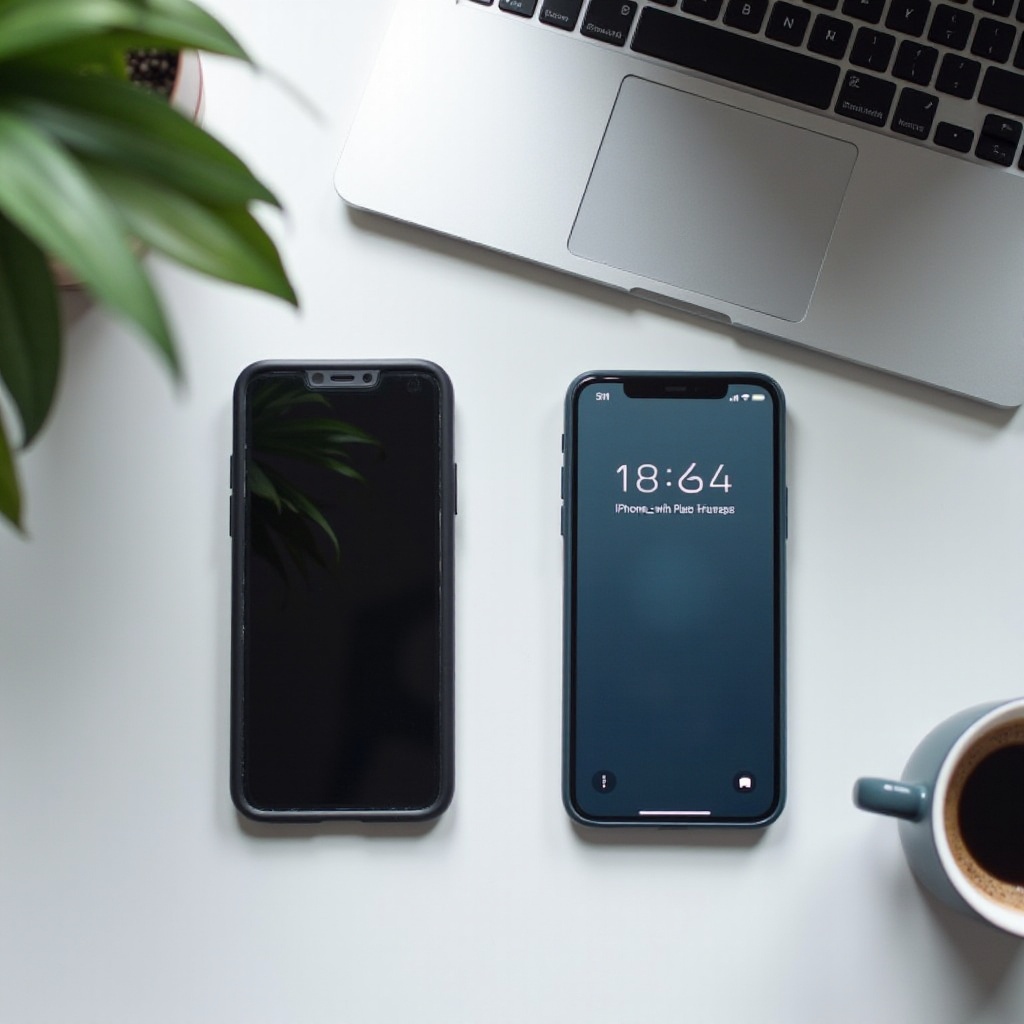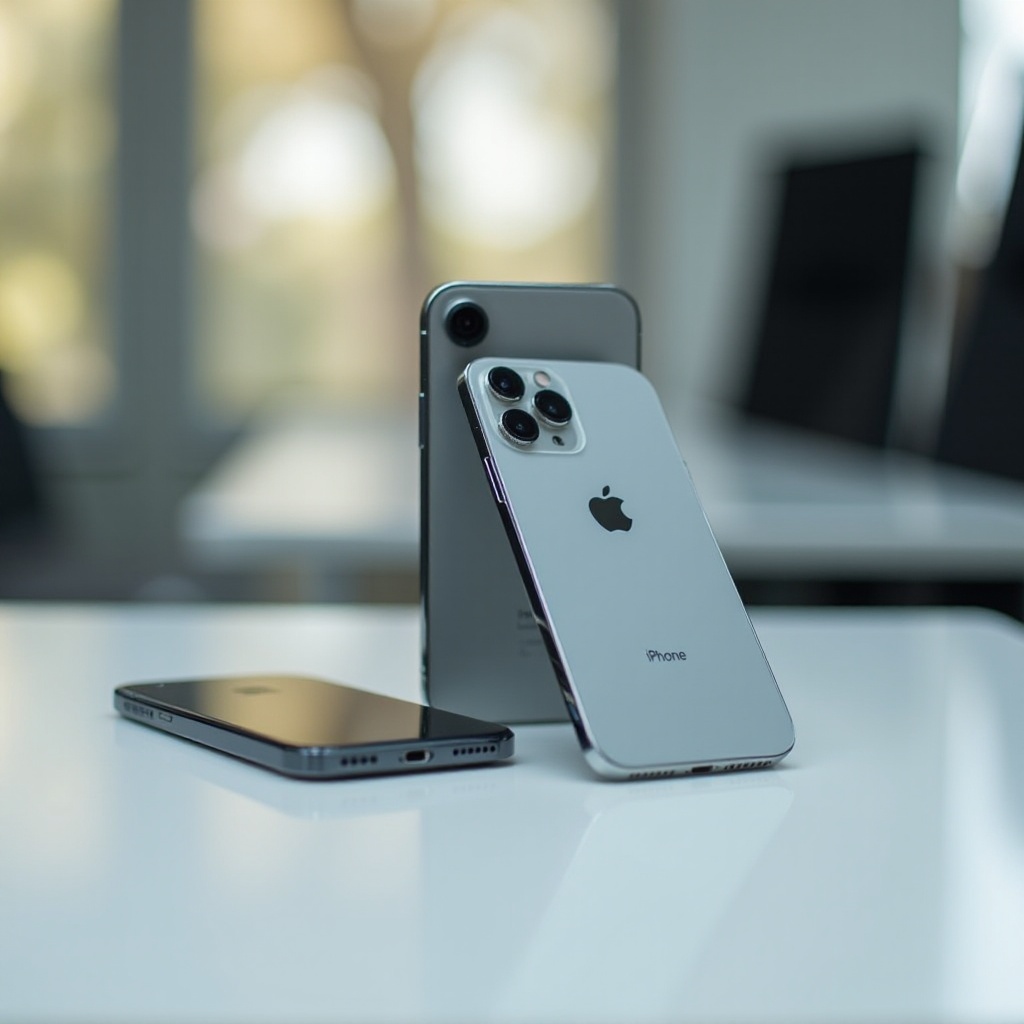Introduction
Choosing between the iPhone 8 and iPhone 8 Plus can be challenging. Both devices, though released a few years ago, continue to serve many users with exceptional performance and features. This comparison will delve into their design, display, performance, camera, battery life, and additional features, helping you make an informed decision.

Design and Build Quality
The design and build quality of a phone significantly influence the user experience. While both the iPhone 8 and iPhone 8 Plus share similar aesthetics, there are some key differences:
Size and Weight
- The iPhone 8 is notably smaller with dimensions of 138.4 x 67.3 x 7.3 mm and weighing 148 grams.
- The iPhone 8 Plus, being larger, measures 158.4 x 78.1 x 7.5 mm and weighs 202 grams.
- The compact size of the iPhone 8 makes it easier to handle and more pocket-friendly.
Material and Durability
- Both phones feature a glass back and an aluminum frame, which gives them a premium feel.
- The use of durable glass makes them resilient, but it also means they are more prone to smudges and potential cracks if dropped.
Color Options
- They come in several color choices, including Silver, Space Gray, and Gold.
Moving from design, the next feature that often matters most to users is the display. Differences in the display can profoundly impact the visual experience of using these phones.
Display Comparison
The screen is where you engage with your phone the most. Here’s how the iPhone 8 and iPhone 8 Plus compare:
Screen Size and Resolution
- The iPhone 8 has a 4.7-inch screen with a resolution of 750 x 1334 pixels.
- The iPhone 8 Plus boasts a larger 5.5-inch screen and a higher resolution of 1080 x 1920 pixels.
- The iPhone 8 Plus offers more screen real estate, which is beneficial for media consumption and gaming.
Display Technology: Retina HD
- Both models use Retina HD technology, producing crisp and clear images.
- True Tone technology adjusts the display based on ambient lighting, reducing eye strain and making colors look more natural.
User Experience
- The larger display on the iPhone 8 Plus can enhance the usability, especially for those who prefer bigger text and icons.
Now, let’s move on to the nerve center of any smartphone: the performance and hardware.

Performance and Hardware
Processing power is pivotal for a seamless smartphone experience. Both phones come packed with strong hardware, but there are nuances:
Processor and Chipset
- Both the iPhone 8 and 8 Plus are powered by the A11 Bionic chipset.
- This 6-core processor significantly improves CPU performance, making multitasking smooth.
RAM and Storage
- The iPhone 8 offers 2GB of RAM, while the iPhone 8 Plus has 3GB of RAM.
- Storage options include 64GB and 256GB for both models, catering to various needs.
Benchmark Results
- Benchmarks indicate a slight edge for the iPhone 8 Plus in performance due to its additional RAM.
After understanding the performance, let's get into one of the most crucial aspects for many users: the camera capabilities.
Camera Capabilities
A smartphone’s camera is a major selling point, especially for photography enthusiasts.
Rear Camera Specifications
- The iPhone 8 features a single 12MP rear camera.
- The iPhone 8 Plus enhances this with a dual 12MP rear camera setup, including a wide-angle and a telephoto lens.
Front Camera Specifications
- Both phones have a 7MP front-facing camera, perfect for selfies and FaceTime.
Photography Features
- The iPhone 8 Plus offers Portrait Mode and Portrait Lighting, providing professional-looking photos with blurred backgrounds.
A powerful camera needs adequate power to function effectively, which brings us to the discussion on battery life and charging.
Battery Life and Charging
Battery life can make or break the user experience. Here’s how the iPhone 8 and iPhone 8 Plus compare:
Battery Capacity
- The iPhone 8 has a 1,821 mAh battery.
- The iPhone 8 Plus boasts a larger 2,691 mAh battery.
Charging Options
- Both phones support fast charging and can charge up to 50% in 30 minutes with an appropriate adapter.
- They also support wireless charging, adding to their convenience.
Real-World Usage
- On a full charge, the iPhone 8 provides around 12 hours of talk time, while the iPhone 8 Plus can last up to 14 hours.
With battery aspects discussed, it's time to delve into the miscellaneous but important additional features.
Additional Features
Additional features can often sway a user's decision. Here’s what you can expect:
iOS and Software Experience
- Both phones come with iOS support, offering a smooth and secure software experience.
- Regular updates ensure improved functionality and security.
Audio Quality
- Stereo speakers in both models deliver clear and loud audio.
- The iPhone 8 Plus's larger size can slightly enhance the audio experience.
Water and Dust Resistance
- Both models are rated IP67, meaning they are resistant to dust and can withstand immersion in water up to 1 meter for 30 minutes.
The details provided so far should adequately highlight the core differences and features. Let’s summarize everything.

Conclusion
Choosing between the iPhone 8 and iPhone 8 Plus ultimately hinges on your personal preferences and needs. If you value a larger display and enhanced camera capabilities, the iPhone 8 Plus is the better option. However, if you prefer a more compact phone with equally robust performance, the iPhone 8 is still an excellent choice. Both devices stand the test of time with solid features and reliability.
Frequently Asked Questions
Which phone is better for photography?
The iPhone 8 Plus is better for photography due to its dual rear camera setup with Portrait Mode and Portrait Lighting.
Does the iPhone 8 Plus have a better display than the iPhone 8?
Yes, the iPhone 8 Plus has a larger and higher-resolution display, offering an enhanced viewing experience.
What are the key differences in battery life between the two models?
The iPhone 8 Plus has a larger battery and lasts longer, providing up to 14 hours of talk time compared to the iPhone 8's 12 hours.




